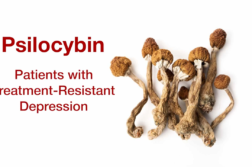NASHVILLE, Tenn. (Ivanhoe Newswire) – Are there factors that can increase someone’s risk of suicide attempts?
The CDC considers suicide a serious health problem. In 2020, more than one million people in the U.S. made a suicide attempt and about 45,000 died by suicide. Suicidal behaviors have been strongly linked to mental disorders, but researchers involved in one of the largest genetic studies on suicide attempts say there may also be a genetic factor.
Every 11 minutes, someone in the U.S. dies by suicide.
“Suicide is the tenth leading cause of death in the United States and it’s top three among young adults and adolescents,” says Douglas Ruderfer, associate professor at Vanderbilt University Medical Center.
Main risk factors for suicide attempt include depression and mental health disorders, but researchers from an international suicide genetics consortium say risk factors may also be hidden within our DNA. They looked at the DNA sequence of 500,000 people – 30,000 were people who attempted suicide.
Ruderfer explains to Ivanhoe, “What we found is that there actually is independent genetic risk that is contributing directly to suicide attempt that is not simply through the risk for psychiatric disorders.”
The researchers identified that increased risk from a region on chromosome seven. Even after controlling for psychiatric disorders, that risk was still significant.
MD/PhD student at Vanderbilt University Medical Center, JooEun Kang, says, “It really supports the idea that there’s no one risk factor that just defines suicide attempts.”
Genetics is just one of many factors but ‘genetics is not destiny,’ according to Ruderfer.
“The hope would be to take that information and to use it as a pathway to understand ways in which we can both reduce risk or find strategies to intervene,” he adds.
About 260 researchers from 20 countries contributed to this study. For every person who dies by suicide, they are 20 attempts. If you are someone you know needs help, call the National Suicide Prevention Lifeline at 1-800-273-talk (1-800-273-8255). Starting in July, this number will be replaced by a three-digit hotline number that is easier to remember, 9-8-8. This number is not yet operational during the switchover.
Contributors to this news report include: Milvionne Chery, Producer; Roque Correa, Videographer, Editor.
To receive a free weekly e-mail on medical breakthroughs from Ivanhoe, sign up at: http://www.ivanhoe.com/ftk
Sources:
https://www.ivanhoe.com/smart-living/attempted-suicides-thriving-after-attempt/
https://reportingonsuicide.org/recommendations/
MEDICAL BREAKTHROUGHS
RESEARCH SUMMARY
TOPIC: GENETIC RISK OF SUICIDE ATTEMPTS
REPORT: MB #5042
BACKGROUND: Suicide is death caused by injuring oneself with the intent to die. A suicide attempt is when someone harms themselves with any intent to end their life, but they do not die as a result of their actions. Many factors can increase the risk for suicide or protect against it. Suicide is connected to other forms of injury and violence. Suicide rates increased 30% between 2000–2018 and declined in 2019 and 2020. Suicide is a leading cause of death in the United States, with 45,979 deaths in 2020. This is about one death every 11 minutes. The number of people who think about or attempt suicide is even higher. In 2020, an estimated 12.2 million American adults seriously thought about suicide, 3.2 million planned a suicide attempt, and 1.2 million attempted suicide.
(Source: https://www.cdc.gov/suicide/facts/index.html)
DIAGNOSING: While the link between suicide and mental disorders (in particular, depression and alcohol use disorders) is well established in high-income countries, many suicides happen impulsively in moments of crisis with a breakdown in the ability to deal with life stresses, such as financial problems, relationship break-up or chronic pain and illness. In addition, experiencing conflict, disaster, violence, abuse, or loss and a sense of isolation are strongly associated with suicidal behavior. Suicide rates are also high amongst vulnerable groups who experience discrimination, such as refugees and migrants; indigenous peoples; lesbian, gay, bisexual, transgender, intersex (LGBTI) persons; and prisoners. By far the strongest risk factor for suicide is a previous suicide attempt.
(Source: https://www.who.int/news-room/fact-sheets/detail/suicide)
NEW TECHNOLOGY: Dr. Catherine Glenn of the University of Rochester and her colleagues set out to examine if new methods of monitoring short-term suicide risk and warning signs are feasible and acceptable (i.e., appropriate, and able to be carried out) for adolescents at increased risk for suicide attempts. They paired ecological momentary assessment (EMA), which asks the individual to complete surveys to measure their thoughts, emotions, and behaviors several times each day, with actigraphy watches (similar to smartwatches) to monitor sleep cycles. The findings of this study could open major avenues for research, assessment, and interventions for people at risk for suicide.
(Source: https://afsp.org/story/using-technology-to-measure-suicide-risk-in-teens-post-hospitalization)
FOR MORE INFORMATION ON THIS REPORT, PLEASE CONTACT:
Craig Boerner
If this story or any other Ivanhoe story has impacted your life or prompted you or someone you know to seek or change treatments, please let us know by contacting Marjorie Bekaert Thomas at mthomas@ivanhoe.com




